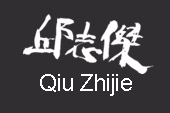 |
The shape of time: Foreword |
|||||||
|
In 2005 I spent some time in London with Qiu Zhijie. He was there as his work was included in the important exhibition Between Past and Future: New Photography and Video from China at the Victoria and Albert M useum and I was there as I was curious to see how the exhibition I had seen at Asia Society and I nternational C enter of P hotography would look in the very different setting of one of England's most august institutions. In addition he wanted to see some of the leading galleries in London and we saw quite a few, ranging from exceptional cla ss ical Chinese works of art at Giuseppe Eskenazi to contemporary works at White Cube on Hoxton Square in Shoreditch. I first became acquainted with his work in the exhibition Inside Out at Asia Society in New York in 1998. The range of his activities was apparent from the photo-based Tattoo I and II to the conceptual investigation of the qualities of calligraphy, the quinte ss ential Chinese art form, in A One-Thousand-Time Copy of Lantingxu (19 90 -1997). The more I found out about him and the more I discu ss ed his work with a ss ociates and critics, it became apparent that as an artist he was difficult to pin down. Active as a photographer, performance and video artist, not to mention teaching, curating exhibitions such as the New Folk Movement C The Reconstruct of the Commonality Living and writing, was it perhaps po ss ible that he was spreading himself too thin? I was reminded of the title of a 1983 painting by Jasper Johns, Racing Thoughts which is an a ss emblage of images of many of the most significant influences on his work from his earliest years as an artist. Racing thoughts can indicate the existence of a clinical condition but they can also be productive of brilliant ideas that need only to be developed. During the time we spent together and in subsequent meetings in Beijing , we continued our discu ss ions, frequently returning to the question of when a brilliant idea becomes a satisfying work of art. Art needs both Yi (a significant idea, spirituality, originality of concept) and Shu (craftsmanship, technical skill). Qiu Zhijie has both in abundance and in his finest works Yi and Shu are mutually supportive. From these conversations came the present exhibition which consists of two series of works, The Shape of Time , which I think are among his most satisfying to date. Both have been admirably described by Gao Shim ing and Yu Christina Yu and I am grateful to both authors for their carefully considered comments. Thanks are also due to the staff at Chambers Fine Art, Jing Yu, Helen Chen, and Joe Palumbo. Christophe W. Mao December 2006 New York |